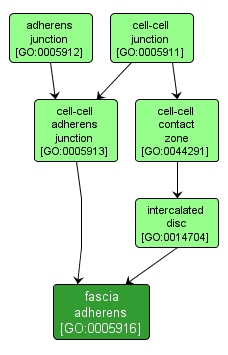| Desc: |
A cell-cell junction that contains the transmembrane protein N-cadherin, which interacts with identical molecules from neighboring cells to form a tight mechanical intercellular link; forms a large portion of the intercalated disc, the structure at which myofibrils terminate in cardiomyocytes. |














